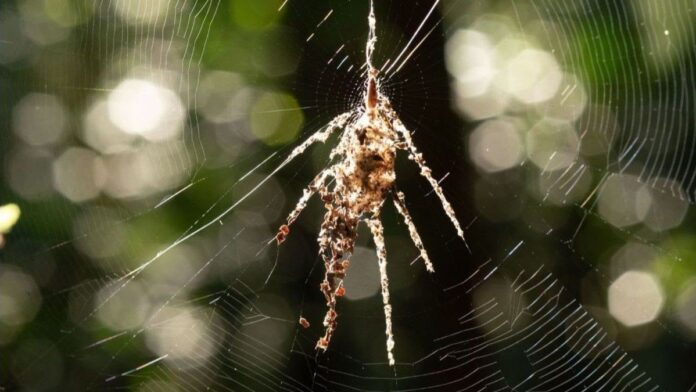Tiny orb weaver spiders in remote corners of the world have developed a remarkable strategy for survival: crafting giant, menacing decoys out of silk, plant debris, and even the remains of their prey. These arachnid-shaped fakes are spun by Cyclosa inca spiders found in the Peruvian Amazon and the Cyclosa longicauda species in the Philippines.
Measuring just a fraction of an inch (2.5 millimeters) long, these miniature weavers create intricate wheel-shaped webs. But nestled within these classic orb webs lies a surprising secret: elaborate decoys that dwarf the spiders themselves. Some resemble crude stick figures, while others accurately mimic the shape and size of larger, more intimidating spiders.
This isn’t simply an artistic quirk. Researchers now understand these decoys play a crucial role in the survival of these tiny predators. Unlike other orb weavers who build silken retreats within their webs for protection, Cyclosa spiders dedicate significant time and resources to constructing these elaborate fakes.
“They meticulously arrange detritus, prey carcasses, and silk into a structure that’s not only larger than their own body, but clearly resembles the silhouette of a bigger, menacing spider,” explains George Olah, lead author of a new study published in Ecology and Evolution. “These spiders turn their webs into theaters of deception.”
The rationale behind this unusual tactic is likely twofold. Firstly, these large decoys likely frighten off predators like birds and lizards, convincing them that the web belongs to a larger, potentially dangerous spider. This keeps potential attackers at bay. Secondly, the spiders’ own coloration matches the hues of their decoys, effectively camouflaging them amidst the tangled plant matter and prey remains.
When threatened, these tiny masters of disguise don’t merely hide; they add another layer to their deception. Cyclosa spiders shake their abdomens within the decoys to create vibrations that mimic a larger spider in motion, further bolstering the illusion.
The study suggests these elaborate decoys may offer advantages beyond predator deterrence. They could serve as safe havens for egg-laying, potentially attracting prey and even strengthening webs against adverse weather conditions. Further research will shed light on these additional benefits.
This discovery highlights the incredible adaptability of spiders and their surprising creativity in navigating a world filled with threats. It also underscores the importance of continued exploration in lesser-known ecosystems like the Amazon rainforest, where nature continues to unveil its remarkable secrets.






























